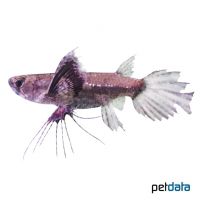African Butterfly Fish (Pantodon buchholzi)
| African Butterfly Fish Pantodon buchholzi | |
|---|---|
| Name | African Butterfly Fish |
| Name Lat. | Pantodon buchholzi |
| Family | Freshwater Butterflyfish |
| Family lat. | Pantodontidae |
| Order | Bony Tongues |
| Order lat. | Osteoglossiformes |
| Origin | Western, Central Africa |
| Habitat | Forest streams, ponds |
| Diet | Carnivore |
| pH | 6.0-7.5 |
| Behavior | Predatory |
| Keeping | Individual, group |
| Care Level | Moderate |
| Reproduction | Egg scatterer |
| Breeding | Difficult |
| Life Span | 3-5 years |
| Protection | No |
| Metric Units | |
| Size | 12 cm |
| Temperature | 23-30 °C |
| Hardness | 1-10 °dH |
| Aquarium | 100 l |
| US Units | |
| Size | 4.7" |
| Temperature | 73-86 °F |
| Hardness | 18-178 ppm |
| Aquarium | 25 gal |
Distribution and habitat
Butterflyfishes are widely distributed in West and Central Africa, from Sierra Leone to Nigeria, Cameroon, Central African Republic and Congo. They live on the water surface of stagnant or slow-flowing waters, such as streams, river arms, ponds and lakes with dense aquatic plants reaching the surface, floating plants or overhanging riparian vegetation.
Maintenance
The aquarium should have dense marginal planting, with some plants flooding to the water surface. A dark substrate covered with some foliage (sea almond leaves), subdued light (floating plant cover) and a very weak current is ideal.
No ammonia, ammonium and nitrite should be detectable, the nitrate value should not exceed 100 mg/l. To ensure the water quality and oxygen content, a filter and heater adapted to the aquarium size is required, as well as lighting for the species-appropriate day-night rhythm of the animals.
Diet
In the wild they feed mainly on approaching insects. The diet consists of small insects such as flies, spiders, small mealworm larvae and crickets, supplemented with live cyclops, daphnia, gammarus and black mosquito larvae, which are also well accepted freeze-dried or frozen. After habituation, high-quality, protein-rich dry food (flakes, granules) is also accepted, but should not be the main component of the diet. The food is eaten exclusively from the water surface
Only as much should be fed as is eaten immediately (in a maximum of 10 minutes). A regular and varied diet promotes health and increases resistance.
Behaviour and compatibility
They can be incompatible with each other and with other surface fish. Keeping a small group is only recommended in a larger tank with dense surface vegetation. Towards other fish they behave peacefully. Fish that are too small are considered food
Basically, only compatible fish species with similar demands on water condition and water temperature should be socialized.
Sex dimorphism
The male has a concave notch on the posterior margin of the anal fin, which is straight in the female.
Reproduction and breeding
They are free spawners. Breeding in the aquarium is rarely successful. The courtship extends over several days. During each spawning only 3-7 eggs are released by the female. Immediately before this, the male clutches the female with his pelvic fins under water plant leaves. A tube formed with the anal fin of the male enables internal fertilization. A total of up to 100 eggs are laid per day, which float freely in the water. After 3-4 days the larvae hatch. Feeding the larvae is very difficult, as they do not actively search for food. They can be fed with Artemia nauplii, springtails and later with Drosophila and aphids. In community tanks breeding is hardly possible, because the young fish are easy prey.
Important
They lurk motionless on the water surface, well camouflaged between plants, for insects. Their tail fin allows them to catapult themselves out of the water in pursuit of flying insects, and their large pectoral fins allow them to glide up to 2 meters. Their eyes allow them to simultaneously detect prey above the water as well as see enemies below them in the water. The aquarium must be suitably well covered, with at least 10 cm distance from the water surface.
The well-being of the fish must be checked regularly. The temperature should be checked daily, the pH, hardness and nitrate value at least every 14 days. A regular partial water change is recommended, even if the pollutant load has not yet reached the upper limit. Sudden changes in water quality should be avoided. Newly introduced fish must be accustomed slowly to the water in the aquarium
Further literature can be found in your pet store.
References
Text: Werner Winter; Image: petdata
Source: BMELV (1998): Tierschutzgutachten - Haltung von Zierfischen (Süßwasser); RIEHL & BAENSCH (2006): Aquarien Atlas Bd. 1, Mergus Verlag; ENGELMANN (2005): Zootierhaltung - Tiere in menschlicher Obhut: Fische, Verlag Harri Deutsch
- Gemäß § 21 Abs. 5 Tierschutzgesetz idgF
